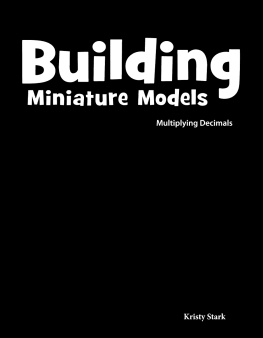0covercover.xhtmlcover1page0001page0001.xhtml22page0002page0002.xhtmlAmazing Animals Honeybees Place Value33page0003page0003.xhtml44page0004page0004.xhtmlTable of Contents Buzzing Around 4 The Lives of Honeybees 6 Bees in Danger 14 Our World in Danger 18 Save the Bees 22 Will You Help? 26 Problem Solving 28 Glossary 30 Index 31 Answer Key 3255page0005page0005.xhtmlBuzzing Around Have you ever watched a bee fly? You may have seen bees buzzing around plants and flowers. Did you wonder what the bees were doing? You may think bees fly around so they can sting people. But that is not true. Bees will only sting if they are scared or bothered. Honeybees would rather do their jobs than sting people. Their jobs are very important.66page0006page0006.xhtml77page0007page0007.xhtmlThe Lives of Honeybees One job that honeybees have is to build their homes. But they do not have to do it alone. Honeybees live in big groups called colonies. Colonies work together to build their homes. These homes are called hives. Most of the time, bees build their hives in trees. The honey that people buy in stores comes from bee farms. The bees on farms do not build their hives in trees like wild honeybees do. The bees on farms live in big boxes that are used as their hives. bee hive Bees on farms use boxes like these as their hives.88page0008page0008.xhtmlLET'S EXPLORE MATH Look at the picture below. Find the number of honeybees. Which of the following show the number of bees in the picture?99page0009page0009.xhtmlHoneybees have another job. They make honey from nectar. Nectar is a sweet juice found in flowers. Bees love the taste. They spend their days searching for nectar. One bee may drink nectar from hundreds and hundreds of flowers each day! Honeybees use their long tongues to drink nectar from flowers. When they drink their fill, they go back to their hives. Once there, they spit into other bees' mouths. These bees chew the nectar for about 30 minutes. Then, they spit it into the honeycomb part of the hive. bees in a honeycomb1010page0010page0010.xhtmlA honeybee uses its tongue to suck up nectar from flowers.1111page0011page0011.xhtmlThe next step is to dry the nectar. Nectar will dry on its own. But honeybees can speed up the process. They begin by flapping their wings very quickly. Bees can flap their wings close to two hundred times per second! Their wings act like little fans. The nectar becomes thick, smooth honey when it dries. These honeybees dry honey in a honeycomb.1212page0012page0012.xhtmlLET'S EXPLORE MATH Honeybees can flap their wings close to two hundred times each second. Which of the following shows the number closest to two hundred?1313page0013page0013.xhtmlHelping Plants Honeybees make honey that people eat. But that is not all they do. Bees help flowers, too. Flowers have a dust called pollen. It sticks to bees when they land. Bees move pollen from flower to flower when they drink nectar. This process is called pollination. It helps flowers make seeds to grow new plants. This bee is covered in pollen.1414page0014page0014.xhtmlLET'S EXPLORE MATH There are 10 fruit trees. Each tree has 10 honeybees drinking nectar from its flowers. 1. Which of these shows the number of bees on 1 tree? 2. Which of these shows the number of bees on all the fruit trees?1515page0015page0015.xhtmlBees in Danger Honeybees help plants and animals. Many animals eat the plants that bees help grow. These animals depend on bees. Without bees, their lives would change. But bees are in danger. They are dying from chemicals that are used to kill bugs. Farmers want to keep bugs from eating their crops. The chemicals they spray to kill those bugs can hurt bees, too.1616page0016page0016.xhtmlBees pollinate many crops, including lemon trees. Two farmers spray chemicals on plants to kill bugs.1717page0017page0017.xhtmlIf honeybees keep dying, they may become extinct. Then, there will be no more honey. Crops will not be pollinated. Without bees, many plants will die. Fruit and nut trees will not grow foods for us to eat. There will be no more almonds. Apples and peaches will stop growing, too. People will not get to eat many of the foods they love. Two boys enjoy fruit.1818page0018page0018.xhtmlThe trees that grow these fruits all need to be pollinated.1919page0019page0019.xhtmlOur World in Danger Honeybees affect many things around them. Bees are small insects. But they play a big role in Earth's food chain. Without bees, creatures such as squirrels and mice will not have berries and seeds for food. These small animals will die without food. LET'S EXPLORE MATH 1. There are 100 + 40 + 6 mice eating berries in a field. Write one number to show how many mice there are. 2. In the same field, there are 192 squirrels eating acorns. Write 192 as a total of hundreds, tens, and ones.2020page0020page0020.xhtmlA honeybee carries pollen from one plant to another. Berries grow when the plant has been pollinated. A mouse eats the berries.2121page0021page0021.xhtmlSmall animals are food for large animals. Many large animals, such as owls and foxes, eat small animals, such as mice and squirrels. Large creatures will die without food to eat. Bees affect many other creatures in our world. Without bees, our lives will change. Many plants will not grow. Lots of animals will die. Foxes and owls eat mice.2222page0022page0022.xhtmlA mouse eats berries.2323page0023page0023.xhtmlSave the Bees Bees are dying around the world, but you can help save them. Start by planting flowers that bees like. These flowers will give bees nectar. Be sure to plant flowers that will bloom at different times of the year. That way, bees will always be able to get nectar. Bees get a lot of nectar from weeds, such as clovers. Weeds can cause other problems. But bees need them. clover2424page0024page0024.xhtmlA honeybee drinks nectar from a clover.2525page0025page0025.xhtmlYou can also help bees by not spraying chemicals on plants. Chemicals make bees sick. If you have bees in your yard, have an adult call a beekeeper. Beekeepers are trained to work with bees. They can get them out of your yard. Then, they can move the hive to a safe place. A beekeeper moves a hive on a bee farm.2626page0026page0026.xhtmlLarge hives can have more than 50, 000 honeybees.2727page0027page0027.xhtmlWill You Help? Honeybees have many big jobs. They make honey for people to eat, and they help plants grow. They help make food for many animals, too. We will all be in trouble without honeybees. Our lives will change. But small changes can help save them. Start helping bees today. It is up to all of us to keep bees safe.2828page0028page0028.xhtmlThese people want farmers to stop using chemicals on crops.2929page0029page0029.xhtmlProblem Solving Jos and Makayla have bees on their farm. First, the bees make honey. Then, they sell the honey. 1. Jos and Makayla have 52 hive boxes. Which of the following show 52?3030page0030page0030.xhtml2. Jos and Makayla add 8 more hive boxes. How many hive boxes do they have now? How do you know? 3. The bees on the farm make 108 pounds of honey in a month. a. Write 108 as a total of hundreds, tens, and ones. b. Draw the number line below, and plot 108. 100 110 120 130 140 150 160 170 180 190 2003131page0031page0031.xhtmlGlossary affect act on a person or thing and cause it to change chemicals things that are made when two or more substances are mixed together colonies groups of similar people or things living in one place creatures types of animals crops groups of plants grown by farmers depend need or to count on someone or something extinct no longer existing in the world food chain a chain of events in which one type of living thing is food for another type of living thing pollination the act of moving pollen from one plant to another process a series of actions that produce something or make something happen3232page0032page0032.xhtmlIndex beekeeper chemicals colonies farmers farms food chain hives nectar pollen pollination wild honeybees3333page0033page0033.xhtmlAnswer Key Let's Explore Math page 7 : B and C page 11 : A page 13 : 1. A and C 2. B page 18 : 1. 146 mice 2. 100 + 90 + 2 Problem Solving 1. A and D 2. 60 hive boxes; Answers will vary but may include 52 + 8 = 60. 3. a. 100 + 0 + 8 b. 1083434page0034page0034.xhtmlMath Talk 1. One beekeeper places 10 honeybees in each of his 10 hives. Another beekeeper places 100 honeybees in 1 hive. Who has more total honeybees? How do you know? 2. Are 20 tens the same as 200? How do you know? 3. How can you build a model of 900 using only tens blocks? 4. Is it possible to build a model of 235 using only hundreds blocks? Why or why not? 5. Stacy says she can make $300 with 30 ten-dollar bills. Seth says he can make $300 with 20 ten?dollar bills and 100 one-dollar bills. Do you agree with either of them? Why? 6. How many ways can you arrange the digits 3, 6, and 9 to create three-digit numbers? How can you use hundreds, tens, and ones to prove that each number is different?3535page0035page0035.xhtmlAmazing Animals Honeybees Place Value Have you heard the buzz about honeybees? Honeybees have many important jobs. They make honey and help plants grow. Use place value as you find out why bees are so important to our lives. Place Value36
Next page















